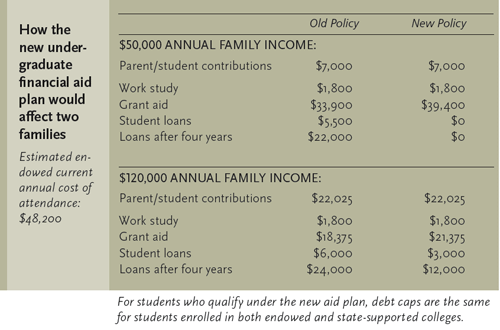COVER STORY: New financial aid is opening doors
There was hope. This fall, Parris is a freshman in the College of Arts and Sciences. Working with Cornell's financial aid office, she received an aid package that wouldn't burden her too heavily with loans, so attending Cornell became a realistic option.
Parris is one of roughly 4,500 students who are benefiting from Cornell's new undergraduate financial aid initiative, launched this fall. By greatly reducing the amount of loan debt for students from families with certain incomes, the policy will allow students of modest means to graduate with little or no debt.
While the motivation behind such a sweeping financial aid package is tied up in a complicated web of politics, process and even morals, Cornell officials say it is important to focus on the fundamental issue of reducing student loan burden. And Cornell is not alone; it joins many other institutions that are looking at new ways to make higher education more affordable for all.
When aid tips the scale
Starting this year, students from families that make $60,000 or less per year were offered a financial aid package with no student loan obligation. For those whose families make $60,001 to $120,000 per year, student loan debts have been capped at $3,000 per year.
Parris will be responsible for $2,250 per year to finance her education, and her mother is expected to contribute $5,100. A work-study job will subsidize another $1,800. These components of Cornell's financial aid packages -- student and parental contributions and student work-study earnings -- have not changed. When Parris graduates, her estimated loan burden will come to a total of $12,000.
Compare that to what Parris' loans might have looked like before the new policy took effect. A typical middle-income student (from a family that makes $60,000-$120,000 annually) would have incurred around $10,000 in loans per year, adding up to a $40,000 debt at the end of four years.
For some middle-income students, the reduced loans were not the deciding factor for choosing Cornell, but they certainly tipped the scale. Tom Schmidt '12, a car and plane enthusiast, is a mechanical engineering major. At one point he had seriously considered Lehigh University, which is closer to home and also known for its engineering program.
